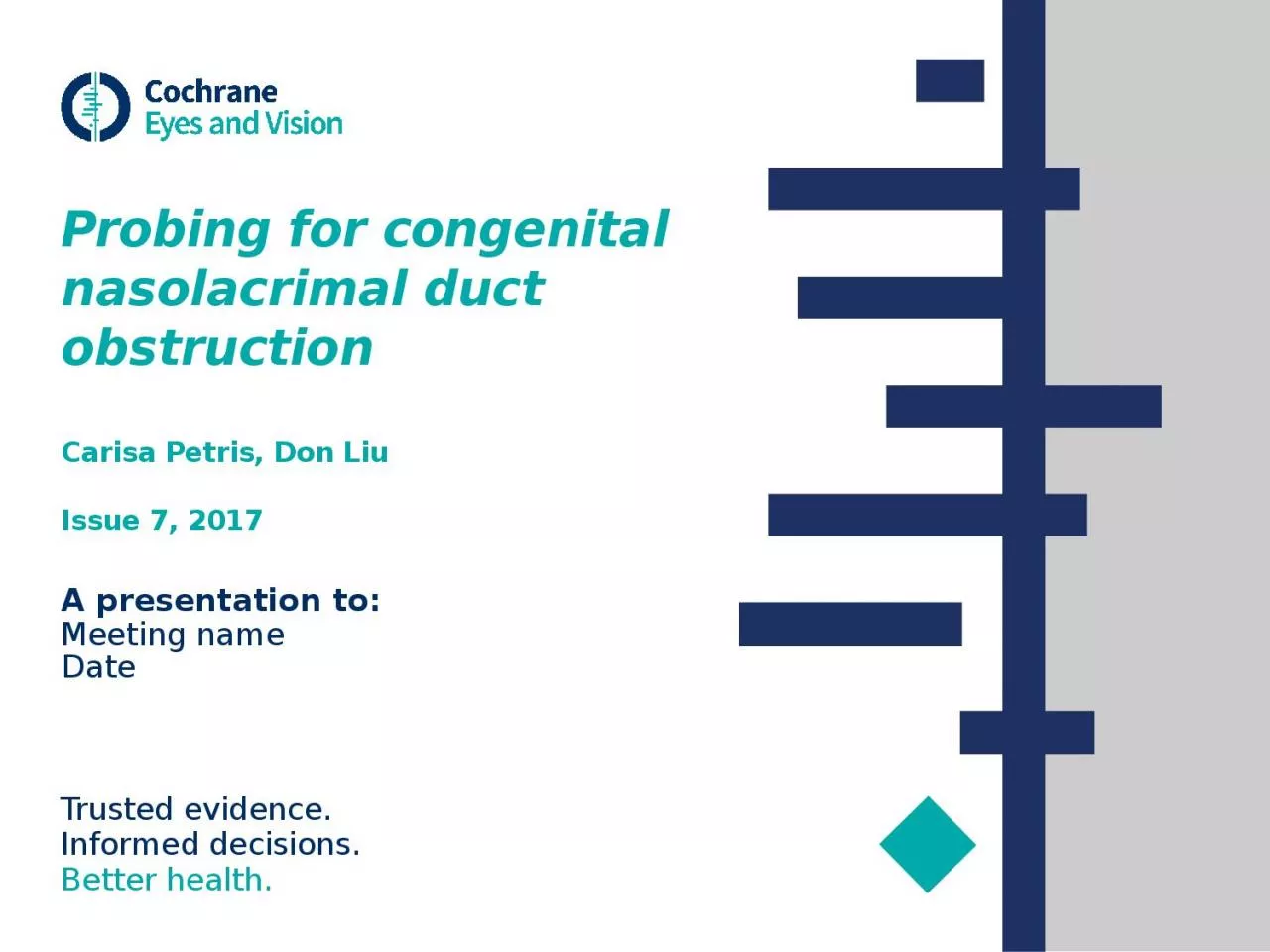

Carisa Petris Don Liu Issue 7 2017 A presentation to Meeting name Date Table of Contents 01 Background 02 Types of studies 03 Key results 04 Tables Risk of BiasForest Plots ID: 932774
Download Presentation The PPT/PDF document "Probing for congenital nasolacrimal duct..." is the property of its rightful owner. Permission is granted to download and print the materials on this web site for personal, non-commercial use only, and to display it on your personal computer provided you do not modify the materials and that you retain all copyright notices contained in the materials. By downloading content from our website, you accept the terms of this agreement.
Slide1
Probing for congenital nasolacrimal duct obstructionCarisa Petris, Don Liu Issue 7, 2017
A presentation to:
Meeting name
Date
Slide2Table of Contents
01
Background
02
Types
of studies
03
Key results
04
Tables (Risk of Bias/Forest Plots)
05
Conclusions
06
Acknowledgements
Slide3BackgroundCongenital nasolacrimal duct obstruction (NDLO) causes excessive tearing in infants
This can lead to infections
The obstruction usually resolves on its own, but probing may help resolve symptoms sooner
Slide4Systematic review objectiveTo assess the effects of probing for congenital nasolacrimal duct obstruction.
Slide5Types of studiesRandomized trial P= children with congenital nasolacrimal duct obstruction aged three weeks to four years presenting with tearing and conjunctivitis
I= probing vs no probing, deferred probing, or other interventions
Slide6Outcomes examined BenefitsTreatment success (absence of clinical signs and symptoms, including epiphora and mucous discharge)Cost effectivenessHarms
Patients requiring secondary procedures
Complications such as bleeding, injury to the nasolacrimal system or eye, or
canicular
stenosis
Slide7Results
Slide8ResultsTwo eligible RCTs (303 eyes of 242 participants, enrolled under the age of 12 months)
Slide903: Key results (continued)“In the other small study (26 eyes of 22 children), more eyes that received immediate probing were cured within one month after surgery compared with eyes that were randomized to deferred probing and analyzed at age 15 months (RR 2.56, 95% CI 1.16 to 5.64)
…”
Slide1004: Tables
Slide1104: TablesTreatment success at 18 months of age
Slide1205: Conclusions“The effects and costs of immediate versus deferred probing for NLDO are uncertain.”
“
Determining whether to perform the procedure and its optimal timing will require additional studies with greater power and larger, well-run clinical
trials”
Slide1306: AcknowledgementsCochrane Eyes and Vision US Satellite, funded by the National Eye Institute, National Institutes of Health
Cochrane Eyes and Vision Editorial Base
, funded by
the UK National
Health Service
Research
and
Development
Programme
Carisa
Petris
, Don Liu
Review citation
Petris
C, Liu D. Probing for congenital nasolacrimal duct obstruction.
Cochrane Database of Systematic Reviews
2017,
Issue
7.
Art. No.:
CD011109.
DOI:
10.1002/14651858.CD011109.pub2